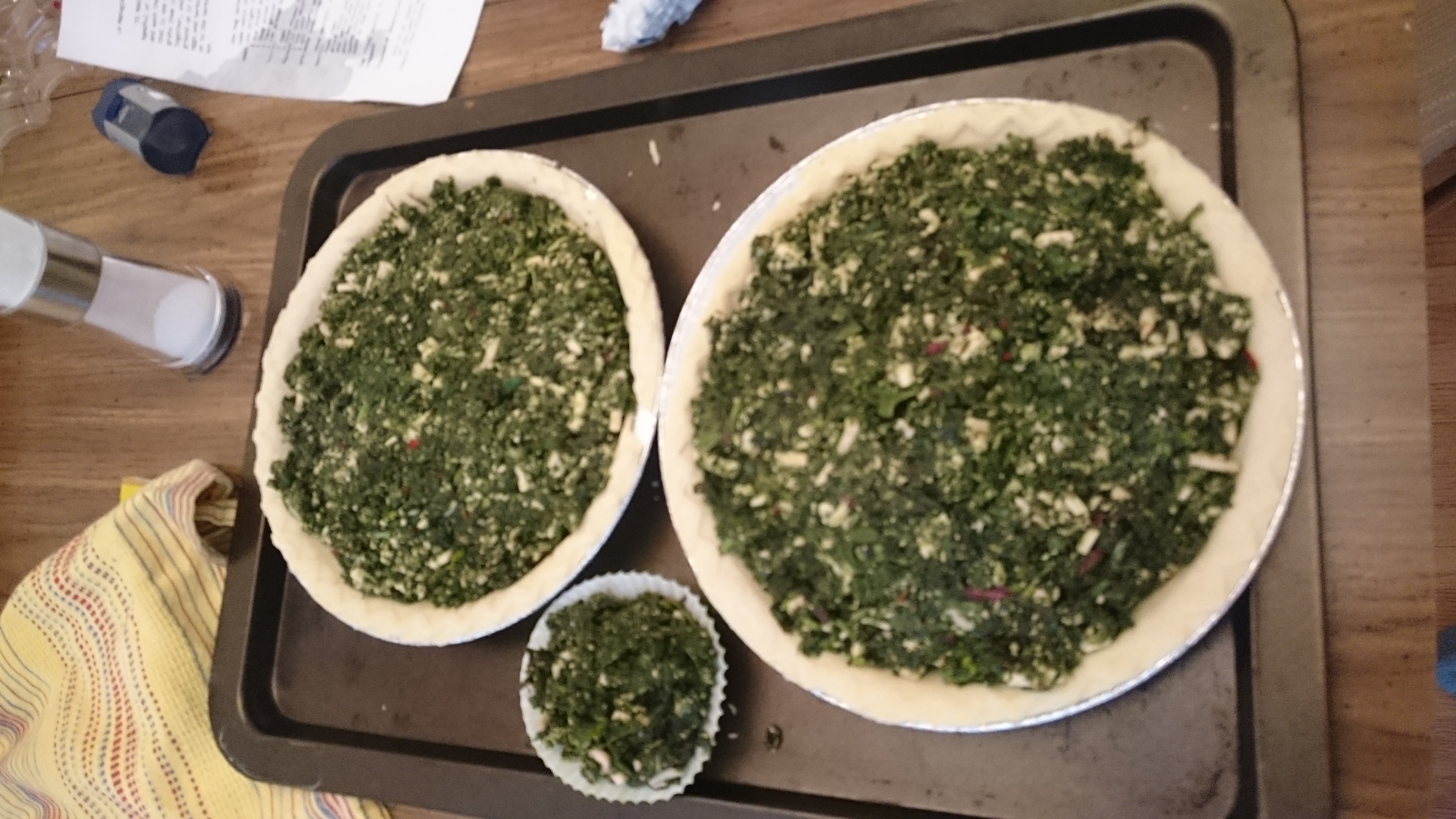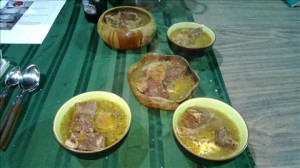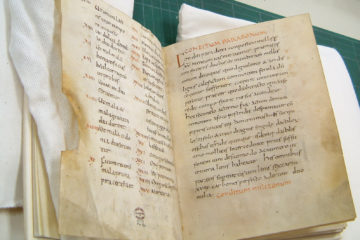Spinach Tart
32.
I was doing the prep work on January’s Culinary Group and I realized I never posted the Spinach Tart. Now this is an easy dish we usually use for potlucks. It’s fast, takes very little time to make, and everyone loves it. We’ve done it as a big tart, we’ve done it as individual tarts, we’ve even done it gluten free.
We originally found the recipe at Medievalcookery.com and went back to the source then worked from there, but we have also made it the way Daniel Myers described and it’s just as good.
The recipe is from one of my go-to cook books Le Menagier de Paris as translated by Janet Hinson.
TO MAKE A TART, take four handfuls of beet-leaves, two handfuls of parsley, one handful of chervil, a bit of turnip-top and two handfuls of spinach, and clean them and wash them in cold water, then chop very small: then grate two kinds of cheese, that is one mild and one medium, and then put eggs with it, yolk and white, and grate them in with the cheese; then put the herbs in the mortar and grind them up together, and also add to that some powdered spices. Or in place of this have first ground up in the mortar two pieces of ginger, and over this grate your cheeses, eggs and herbs, and then throw in some grated old pressed cheese or some other such on to the herbs, and carry to the oven, and then make it into a tart and eat it hot.







You must be logged in to post a comment.